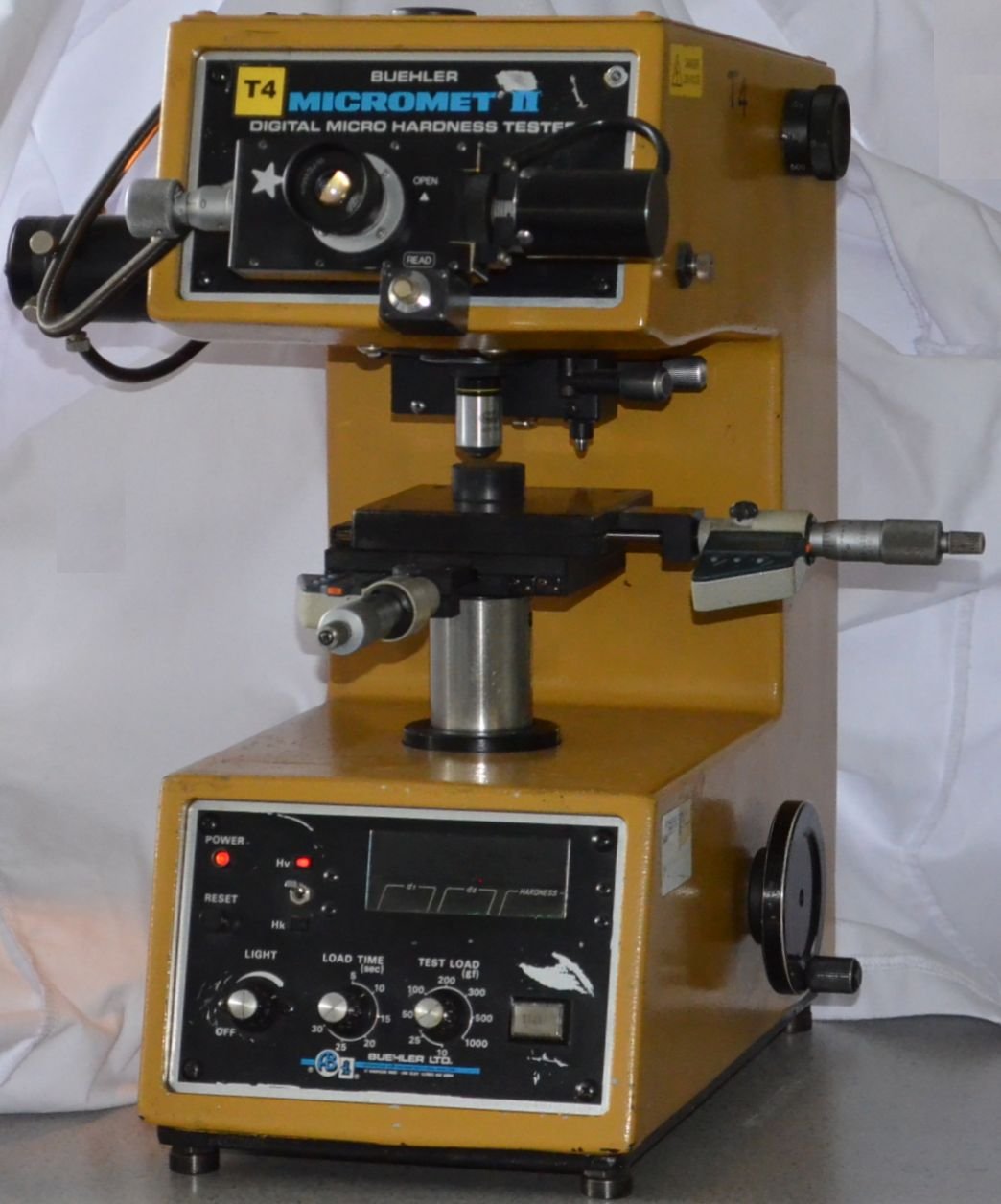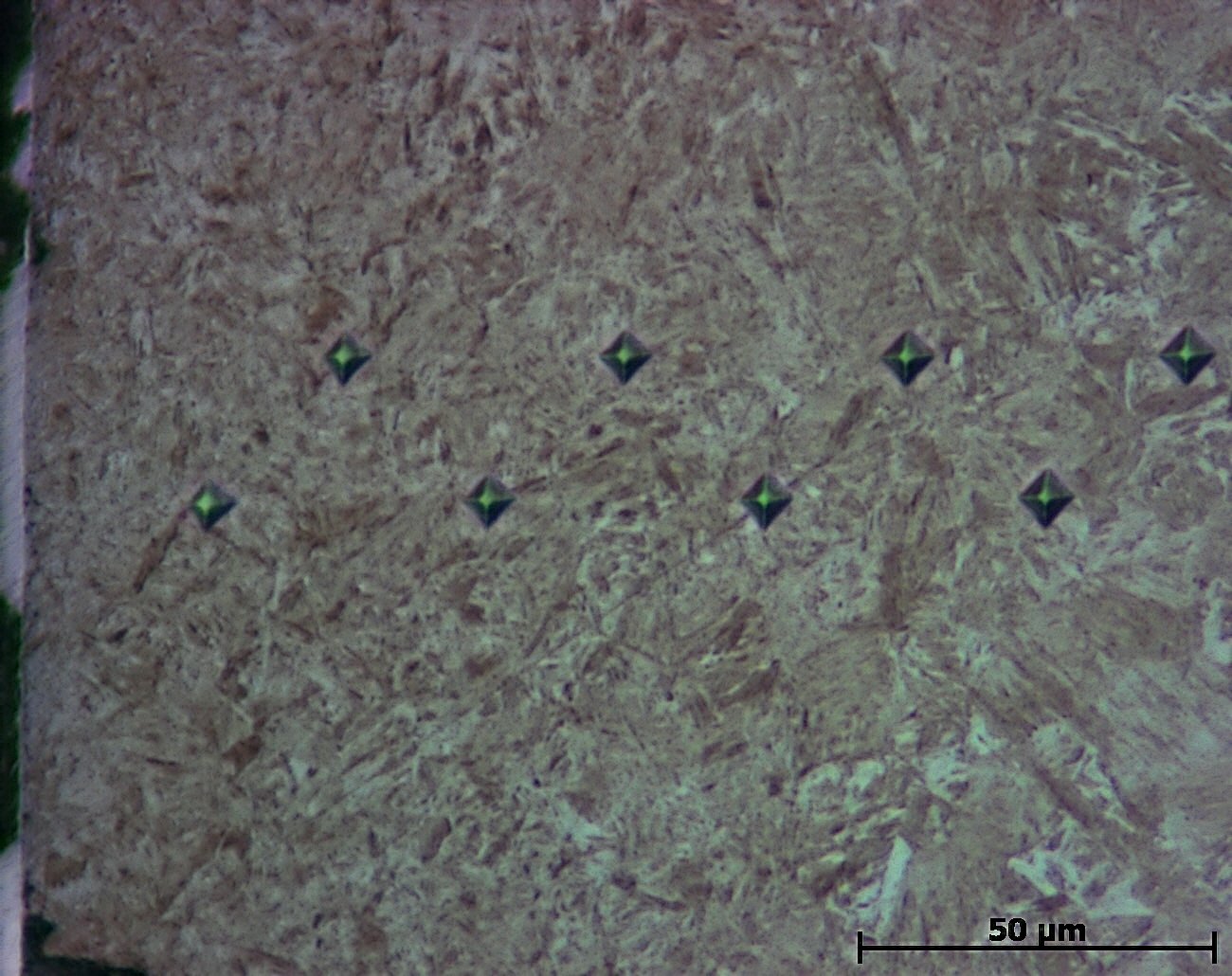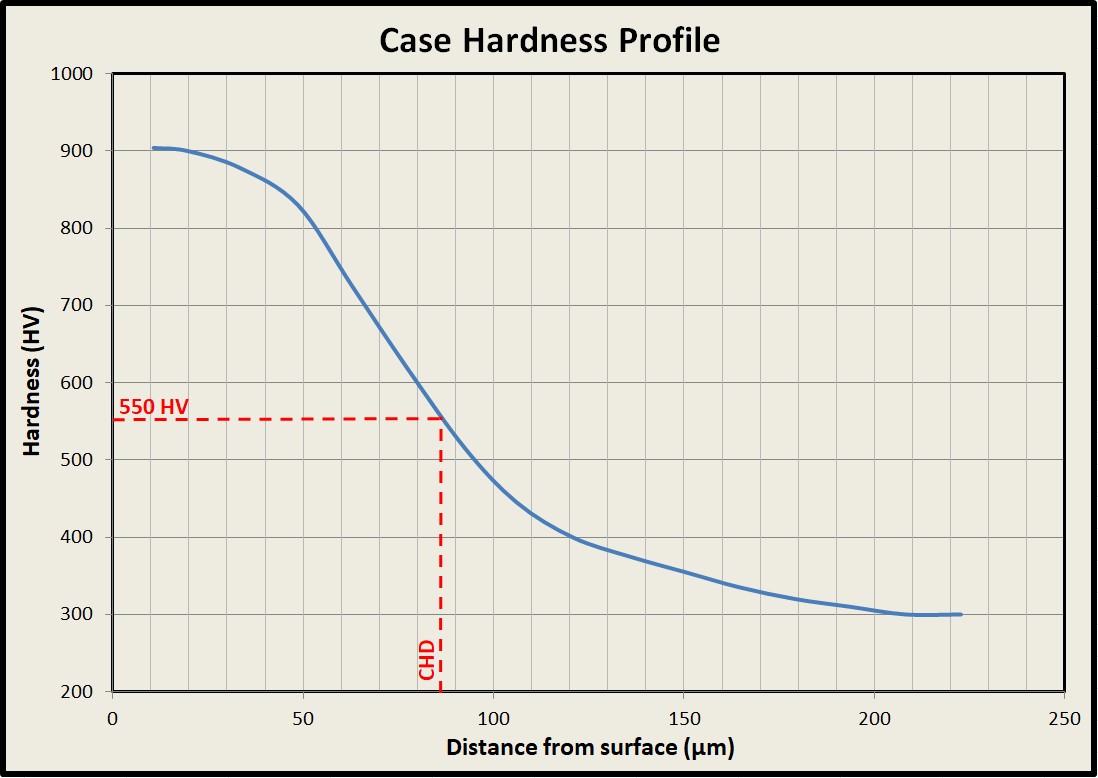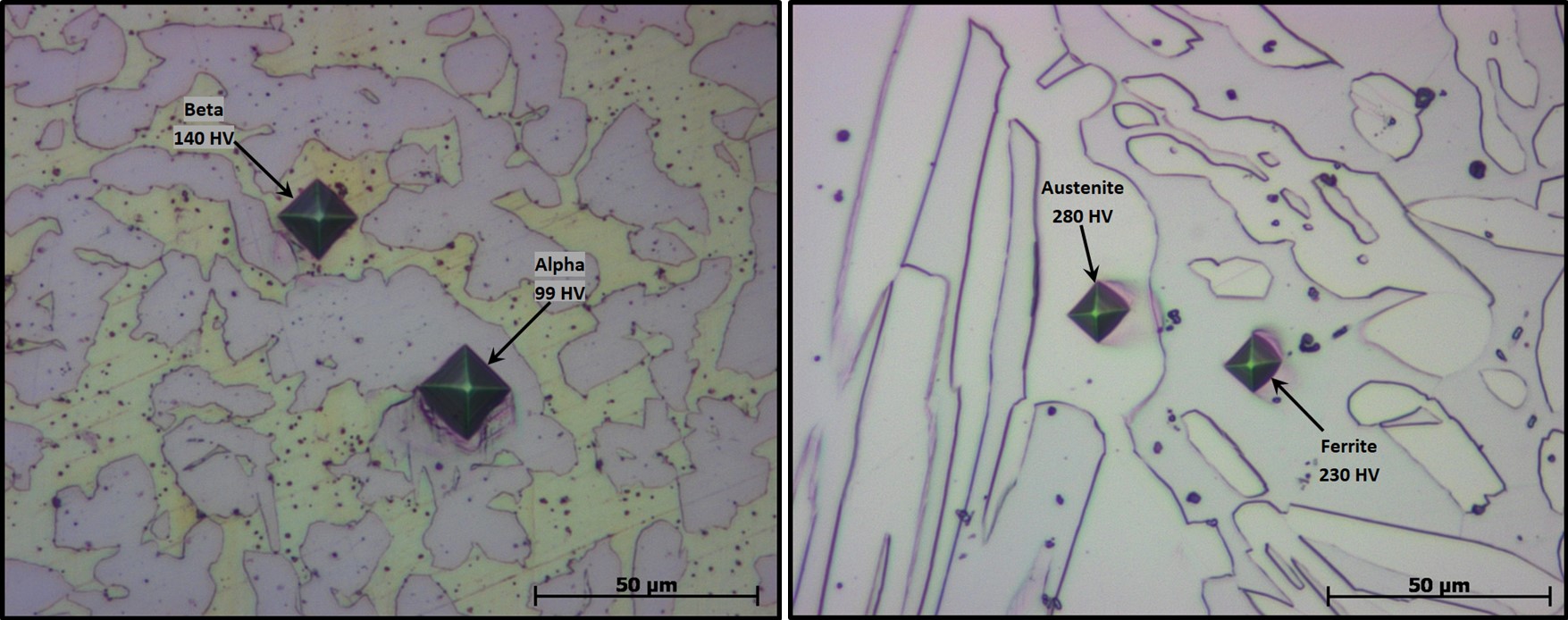Microhardness - Vickers Microindentation Testing and Surface Treatment
 Vickers Microindentation Hardness Testing
Vickers Microindentation Hardness Testing
The Laboratory can perform Vickers microindentation hardness or microhardness tests using its Buehler Micromet II hardness testing machine. Any of the following test loads can be selected: 10g, 25g, 50g, 100g, 200g, 500g and 1kg.
Microhardness testing is typically used to evaluate the success of surface hardening treatments to evaluate carburised, nitrided, carbonitrided, cyanided, flame hardened or induction hardened cases as well as detect and assess decarburisation. It can also test the hardness of individual phases in a microstructure, provided the phase is sufficiently large to accommodate the indent and this can help identify a metallurgical phase too. Microhardness testing is also useful to determine the hardness of specimens too small for traditional bulk indentation testing.
 There are optimum case hardness and case depth requirements for each component and application combination. Deviating from these optimum hardness requirements often lead to premature failure. Carburised gear teeth have maximum wear and bending fatigue resistance because they have hard surfaces and carburising induces beneficial compressive residual stresses in the case.
There are optimum case hardness and case depth requirements for each component and application combination. Deviating from these optimum hardness requirements often lead to premature failure. Carburised gear teeth have maximum wear and bending fatigue resistance because they have hard surfaces and carburising induces beneficial compressive residual stresses in the case.
Even a slight level of decarburisation can be the cause of failure in some components. In high strength bolts used in cyclic loading decarburisation, typically caused during heat treatment, can facilitate the initiation of fatigue cracking leading.
 The illustrated steel photomicrograph and hardness profile show how the depth of a carburised case can be determined from the surface by performing a number of hardness measurements perpendicular to the component surface. According to BS EN ISO 3639 the case hardened depth or CHD is defined as the depth where the hardness is equal to 550 HV.
The illustrated steel photomicrograph and hardness profile show how the depth of a carburised case can be determined from the surface by performing a number of hardness measurements perpendicular to the component surface. According to BS EN ISO 3639 the case hardened depth or CHD is defined as the depth where the hardness is equal to 550 HV.
The following two photomicrographs show for brass and steel of how the Vickers hardness of individual phases within polished metallurgical microstructures can be tested using microindentations to confirm the phase identity supplementing the metallographic identification.
- Alpha and Beta phases are shown in a 2-phase brass.
- Ferrite and Austenite phases are shown in a duplex stainless steel.


